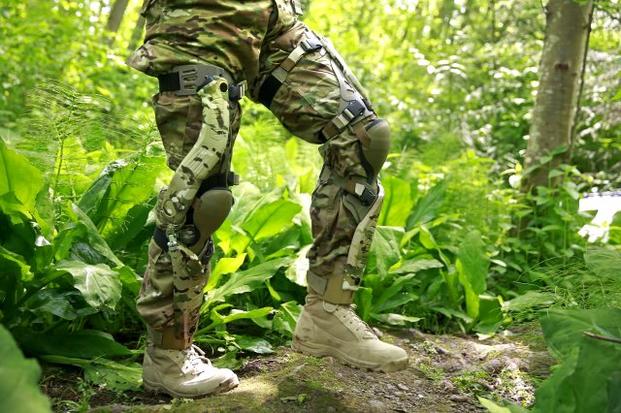Army scientists will soon be testing an energy-harvesting device that straps to the legs and generates power from walking.
The PowerWalk is designed to extract the energy expended when the knee is flexed and negative work is being performed. The system adjusts to a person's gait, so soldiers don't feel like they are wearing a device and can even forget that they have it on, according to a recent Army press release.
"Just by walking, soldiers could generate power," said Noel Soto, a project engineer at the Army Natick Soldier Research, Development and Engineering Center, or NSRDEC. "We are converting the movement of the knees when you walk into useful power."
Soldiers now carry multiple electronic devices that aid in strategy, communication and navigation, including computers, radios, mobile phones, battlefield situational displays and navigation tools. Lacking the power to run these devices could impact soldier safety, performance and efficiency, Army officials maintain.
"The power generated by the device charges the main battery," Soto said. "The goal is to reduce the amount of batteries used by soldiers, or to be able to extend the mission with the same load.
“We have found out through studies that soldiers are carrying a heavy load and a lot of that weight, 16 to 20 pounds for a 72-hour mission, is due to batteries."
The goal is to have the energy-harvesting device weigh one pound and be capable of generating 3.5 watts and to have another device weighing two pounds able to generate 10 watts, Soto said.
NSRDEC is working with Bionic Power Inc. of Canada on the joint-service project, which will benefit the Army and the Marine Corps infantry. Project Manager Soldier Warrior, with the addition of the Office of the Secretary of Defense and USMC, leads the contract.
The project comes under the Joint Infantry Company Prototype Program, which came out of the Soldier Power Generation program.
Field trials are scheduled to begin in 2017.
The knee energy-harvesting device also reduces muscle fatigue during downhill walking.
"As a generator, it creates power," said Soto. "As a motor, it could enhance movement. It could potentially be used in the future for human augmentation. It acts as a brake when you are walking downhill. It actually helps soldiers by preventing sudden movement on the slope."
For Soto, the project has personal meaning as well.
"I am a disabled veteran," Soto said. "I know what it's like to carry a lot of weight on my back. I served with the 82nd Airborne. Everywhere we went was uphill, both ways. Now, I'm in the driver's seat and able to help. I know it's worthwhile because I've been there. I know I'm doing something valuable for the soldier."









